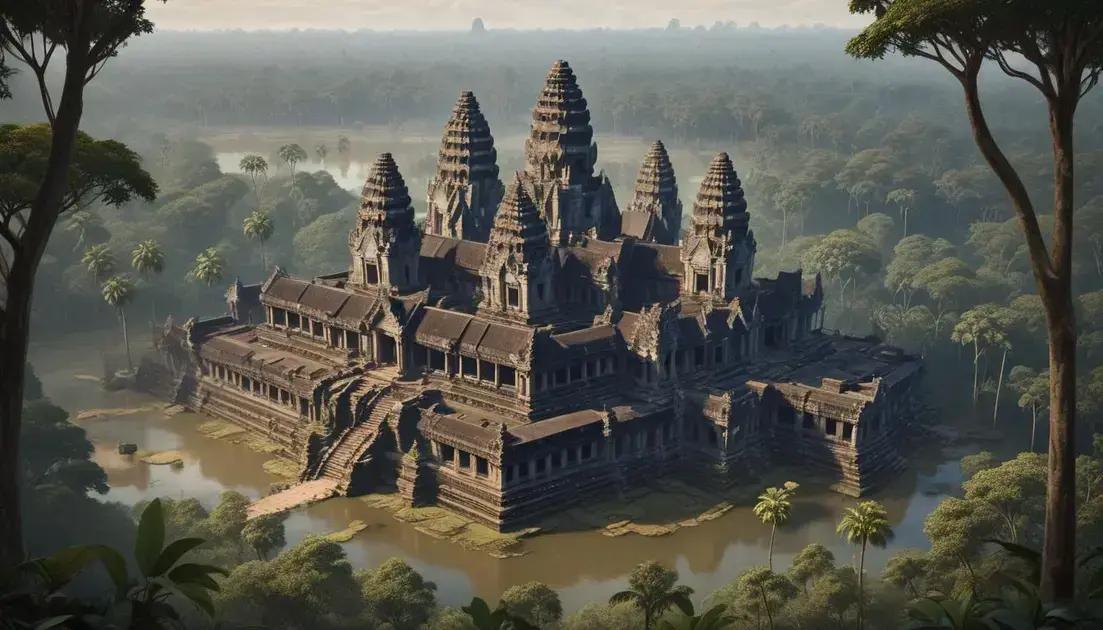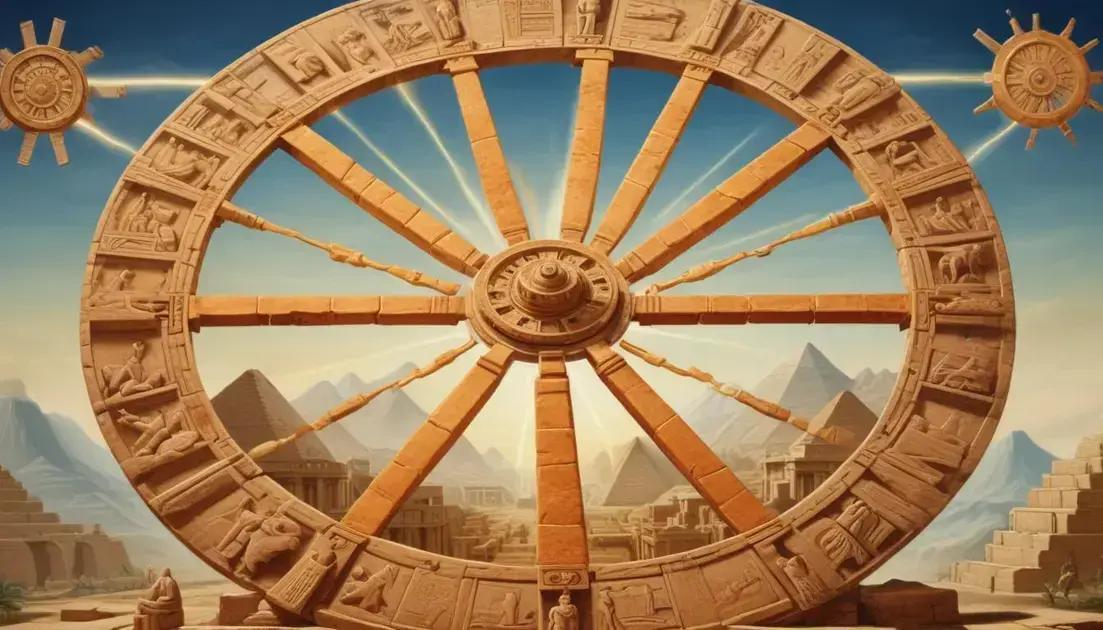
Angkor: The Splendor of the Khmer Empire and Its Temples
The Khmer Empire left a lasting legacy in architecture, art, and culture that continues to shape Cambodia today. Remarkable structures like Angkor Wat showcase the advanced techniques and creativity of its builders. This era fostered rich cultural traditions that are still celebrated, reflecting the deep connection Cambodians have with their history. Efforts to preserve these ancient sites are essential for future generations to appreciate the civilization’s profound influence on modern identity and heritage.
Have you ever wondered about the Angkor temples hidden in Cambodia’s jungles? These monuments tell tales of the incredible Khmer Empire and its artistic achievements. Let’s dive in!
Ancient Khmer Civilization
The Ancient Khmer Civilization flourished in Southeast Asia, mainly in what is now Cambodia. This civilization is known for its rich history and incredible achievements in art, architecture, and engineering. One of its most famous landmarks is Angkor Wat, a breathtaking temple complex.
Society and Culture
The Khmer people developed a vibrant culture that included art, music, and dance. They built grand cities with advanced infrastructures, including roads and canals. This helped them support a large population and engage in trade with neighboring regions.
Religious Beliefs
Religion played a crucial role in Khmer society. The Khmer practiced Hinduism and later Buddhism. Temples were not only places of worship but also served as social and political centers. The intricate carvings found in these temples showcase their devotion and creativity.
Advancements in Agriculture
The Ancient Khmer mastered agriculture, allowing them to thrive. They used sophisticated irrigation systems to control water supply for their crops. This enabled them to grow rice and other staples, supporting their large communities.
Legacy of the Khmer
The legacy of the Ancient Khmer Civilization is seen today in the breathtaking ruins of Angkor. These structures not only attract tourists from around the world but also provide insight into the rich history of Cambodia. The Khmer’s innovation and artistry continue to inspire generations.
Exploring Angkor Wat
Exploring Angkor Wat is an adventure like no other. This iconic temple is the largest religious monument in the world. It was built in the 12th century and dedicated to the Hindu god Vishnu. The architecture of Angkor Wat is remarkable, with intricate carvings telling stories of ancient battles and deities.
What to See at Angkor Wat
While walking through Angkor Wat, you’ll notice the stunning bas-reliefs. These carvings cover the walls and showcase scenes from Hindu mythology. Don’t miss the grand central tower, which symbolizes Mount Meru, the center of the universe in Hindu belief.
The Best Time to Visit
The best time to visit Angkor Wat is during the dry season, from November to February. Mornings offer cooler temperatures and stunning sunrises. Arriving early lets you enjoy the quiet before the crowds arrive.
Getting Around the Temple Complex
Angkor Wat is part of a larger complex with many other temples nearby. Renting a bicycle or tuk-tuk is a great way to explore the area. You can easily spend a whole day visiting different sites. Each temple has its own unique charm and history.
Respecting the Culture
When visiting Angkor Wat, it’s important to respect the local culture. Dress modestly and be respectful in sacred areas. Always ask permission before taking photos of people or ceremonies. This helps maintain the site’s spiritual significance and integrity.
The Role of Religion in Khmer Architecture
The Role of Religion in Khmer Architecture is a key aspect of understanding this ancient civilization. Religion deeply influenced the design and construction of temples and monuments. Most of the largest temples were built as places of worship for Hinduism and later Buddhism.
Hinduism and the Khmer Empire
In the early years, the Khmer primarily followed Hinduism. Temples like Angkor Wat were dedicated to Hindu gods, especially Vishnu. The detailed carvings you see today depict stories from Hindu mythology.
Buddhism’s Influence
As Buddhism spread in the region, it began to shape architecture too. Many temples were adapted from Hindu designs to fit Buddhist practices. This blending of faiths created unique structures that still stand strong today.
Symbolism in Architecture
Khmer architects used symbols to reflect their beliefs. For example, the central tower in many temples represents Mount Meru, the axis of the universe in Hindu belief. This shows how religion guided their architectural choices.
Temples as Community Centers
Temples were more than places of worship. They served as community hubs where people gathered for festivals, ceremonies, and more. The grandeur of these structures also reflected the power and devotion of the Khmer kings.
Conservation Efforts at Angkor
Conservation Efforts at Angkor are crucial for protecting this historic site. Angkor faces many challenges, including climate change, tourism, and natural deterioration. These factors can damage the ancient temples and surrounding environment.
Importance of Conservation
Conserving Angkor is essential to preserve its rich cultural heritage. It attracts millions of visitors each year who come to admire its stunning architecture and history. Without proper care, these treasures could be lost forever.
Ongoing Restoration Projects
Various organizations are involved in restoration projects. They work to stabilize structures and restore carvings that have weathered over time. Using traditional techniques alongside modern technology helps ensure authentic restoration.
Community Involvement
The local community plays a key role in conservation efforts. Many initiatives focus on educating residents about the importance of preserving Angkor. Sustainable tourism practices have also emerged to minimize the impact of visitors.
Government and Global Support
The Cambodian government collaborates with global organizations for funding and expertise. UNESCO has listed Angkor as a World Heritage Site, highlighting its value. This support brings attention and resources needed for ongoing preservation.
Legacy of the Khmer Empire
Legacy of the Khmer Empire continues to influence culture and architecture today. The Khmer Empire was a powerful civilization that thrived in Southeast Asia from the 9th to the 15th century. It left behind a rich history that still fascinates people around the world.
Architectural Marvels
The empire is best known for its stunning temples, especially Angkor Wat. These structures showcase intricate designs and a unique blend of Hindu and Buddhist elements. The architectural techniques developed during this time still inspire modern builders.
Cultural Contributions
The Khmer Empire also made significant contributions to art and literature. Their stone carvings and sculptures reflect a deep understanding of aesthetics and craftsmanship. Many cultural traditions still practiced in Cambodia today trace back to this vibrant empire.
Influence on Modern Cambodia
The legacy of the Khmer Empire shapes Cambodia’s identity. The temples attract millions of visitors each year, contributing to the economy. Additionally, the pride in Khmer history fosters a sense of national unity among the Cambodian people.
Ongoing Research and Preservation
Historians and archaeologists continue to study the Khmer Empire. Ongoing research helps uncover new discoveries about their way of life. This work is essential for preserving the heritage and ensuring future generations appreciate this incredible civilization.
Conclusion
In conclusion, the legacy of the Khmer Empire remains a vital part of Cambodia’s culture and history. The incredible architecture and rich art from this era still inspire people today. Temples like Angkor Wat show the creativity and skill of the Khmer builders.
Moreover, understanding this legacy helps us appreciate the country’s identity. Many traditions and cultural practices trace back to that time. As we continue to explore and preserve these ancient sites, we ensure that future generations can enjoy and learn from them. The Khmer Empire’s influence is a reminder of how history shapes our lives today.


